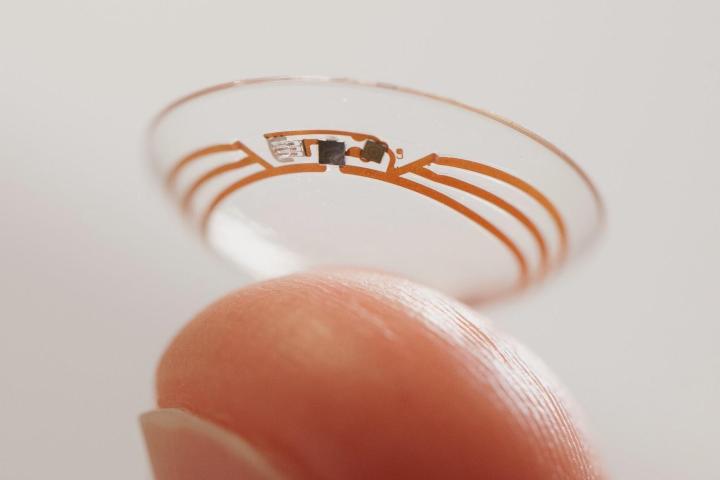
Detailed within a post on the official Google Blog, a team of developers within the Google X unit are currently working on a next generation contact lens that can measure glucose levels. Working on a prototype that can provide a reading once per second, this type of technology could be incredibly useful for anyone that has to deal with type 1 or type 2 diabetes. Up to this point, people with diabetes have had to prick their finger to test blood sugar throughout the day or embed a glucose monitor underneath the skin to constant measure spikes in blood sugar.
To create the smart lens, the development team has embedded a glucose sensor in between two layers of contact lens as well as a tiny wireless chip to transmit data about blood sugar levels. In addition, there’s a minuscule pinhole between the lens and the eye to allow fluid to seep into the lens. The wireless chip needs just one microwatt of power to operate constantly and obtains that power from a static electricity charge.
Speaking about the new technology in the post, Google X project leads Brian Otis and Babak Parvi write “At Google, we wondered if miniaturized electronics—think: chips and sensors so small they look like bits of glitter, and an antenna thinner than a human hair—might be a way to crack the mystery of tear glucose and measure it with greater accuracy.” The development team had to make the glucose sensor much more sensitive than a typical sensor, only because the concentration of glucose is much lower in tear fluid compared to human blood.

The team is also researching the possibility of including LED lights to act as an early warning system in case blood sugar is at a dangerous level. However, the data could be linked to a smartphone or tablet and an app could provide blood sugar notifications. As data is collected throughout the day, anyone that suffers from diabetes would have a huge amount of data to compare up against nutritional data, assuming they logged their food intake. The data could also be made available to a family doctor, thus providing a more complete picture of the patient’s health.
At this time, Google doesn’t have a prospective release date for the new technology, but has completed several clinical research studies testing the product. Google is also in talks with the U.S. Food and Drug Administration about the progress of testing. Google plans on seeking partners to bring the technology to market, likely a contact lens manufacturer as well as companies to developer the miniature tech for the product. The Google X team is also responsible for products that include the self-driving car, Google Glass and Project Loon.
A pain-free alternative to checking blood sugar levels could be particularly useful for pediatricians that likely run into resistance when teaching children with type 1 diabetes how to check glucose levels. It’s likely that Google would also work with contact lens manufacturers to offer the lens in a variety of strengths in order to be useful to people with both diabetes and vision issues.


